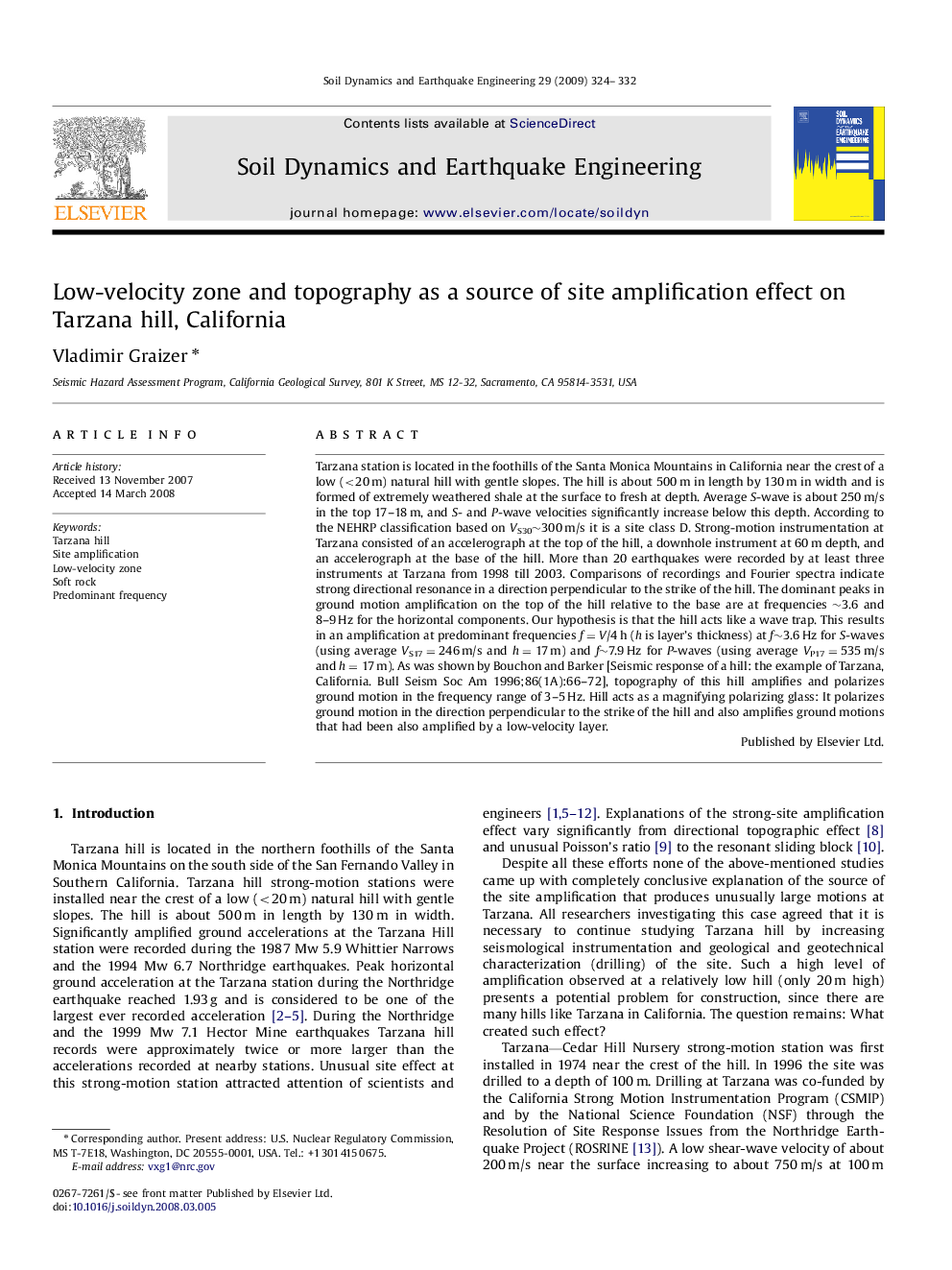| کد مقاله | کد نشریه | سال انتشار | مقاله انگلیسی | نسخه تمام متن |
|---|---|---|---|---|
| 305018 | 512847 | 2009 | 9 صفحه PDF | دانلود رایگان |

Tarzana station is located in the foothills of the Santa Monica Mountains in California near the crest of a low (<20 m) natural hill with gentle slopes. The hill is about 500 m in length by 130 m in width and is formed of extremely weathered shale at the surface to fresh at depth. Average S-wave is about 250 m/s in the top 17–18 m, and S- and P-wave velocities significantly increase below this depth. According to the NEHRP classification based on VS30∼300 m/s it is a site class D. Strong-motion instrumentation at Tarzana consisted of an accelerograph at the top of the hill, a downhole instrument at 60 m depth, and an accelerograph at the base of the hill. More than 20 earthquakes were recorded by at least three instruments at Tarzana from 1998 till 2003. Comparisons of recordings and Fourier spectra indicate strong directional resonance in a direction perpendicular to the strike of the hill. The dominant peaks in ground motion amplification on the top of the hill relative to the base are at frequencies ∼3.6 and 8–9 Hz for the horizontal components. Our hypothesis is that the hill acts like a wave trap. This results in an amplification at predominant frequencies f=V/4 h (h is layer's thickness) at f∼3.6 Hz for S-waves (using average VS17=246 m/s and h=17 m) and f∼7.9 Hz for P-waves (using average VP17=535 m/s and h=17 m). As was shown by Bouchon and Barker [Seismic response of a hill: the example of Tarzana, California. Bull Seism Soc Am 1996;86(1A):66–72], topography of this hill amplifies and polarizes ground motion in the frequency range of 3–5 Hz. Hill acts as a magnifying polarizing glass: It polarizes ground motion in the direction perpendicular to the strike of the hill and also amplifies ground motions that had been also amplified by a low-velocity layer.
Journal: Soil Dynamics and Earthquake Engineering - Volume 29, Issue 2, February 2009, Pages 324–332